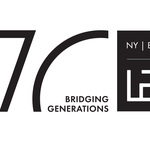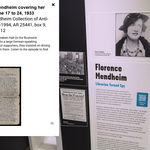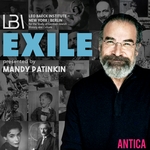Showdown at the Sterling Oval: 1942


- Author
- Jim G. Tobias
- Date
- Sat, Nov 1, 2014
In the 1930s and 1940s, a lively soccer culture was supported in the New York City area by immigrants from all over Europe, including Jewish refugees from Germany. Fans who craved the latest on Jewish teams like the New World Club, Hakoah New York, and Maccabi would find it in the pages of Aufbau.
“The Jewish soccer players of New York lost a battle on Washington’s Birthday,” wrote Max Behrens in March 1942 in the German-Jewish émigré journal Aufbau. “And thus they have foolishly squandered Jewish soccer’s best chance for sorely needed propaganda victory,” lamented the exiled journalist who had been one of the most famous sportswriters in the Weimar Republic.
He was referring to a match between the all-star teams of New York’s Jewish clubs and the German-American Soccer League. The two teams were actually battling for the NY State Soccer Association’s International Cup and bragging rights among the region’s ethnic soccer clubs, but Behrens recognized a proxy battle of ideals and national pride.
Just months earlier, Aufbau had been one of the first American newspapers to report on the looming “final solution to the Jewish question.” Nevertheless, the world still operated on the naive assumption that the horrific stories from Europe were mere propaganda. Even in January 1942, when the Joint Distribution Committee issued a report on the murder of “approximately 240,000 Jews from Germany and other parts of Central Europe who were deported to the German-occupied areas of the Ukraine,” few believed it.
Apparently, the Jewish kickers also took the political significance of the match too lightly; they suffered a decisive 3:1 loss to the German-Americans, who, Behrens chided, “knew what was at stake.”
An immigrant pastime
Although it never competed with baseball or football for mainstream America’s attention, soccer was enormously popular among immigrants. The leagues in immigrant cities like New York, Chicago, or Los Angeles, were typically dominated by new citizens from Italy, Ireland, or Germany. Alongside them were many Jewish teams and leagues, such as the team of the New World Club. Founded by German-Jewish émigrés, the New World Club (NWC) was also the publisher of that community’s most important mouthpiece, Aufbau.
The team was founded in 1939 by a couple of soccer-loving Bavarian Jews who wanted to engage in their beloved pastime more frequently and with real competition. To do that, they had to join one of the existing American leagues. The German-American Soccer League, whose members openly broadcast Nazi sympathies, was out of the question. Thus, the Bavarians chose the Eastern District Soccer League (EDSL), a multi-national league that included several Jewish teams as well as other ethnic teams such as the Lithuanians, the Armenian FC, and the Italian team, Famee Furlane.
The Aufbau team won its first match in the EDSL handily and went on to lead the league of eight teams for most of the 1939/40 season until it was bested by Union City in the title match and thus relegated to “an honest 2nd place,” as it was recorded in Aufbau.
Soccer ranks swell with refugees
Thanks to the flood of refugees from Europe, the EDSL was expanded to ten teams the following year. NWC was now one of four Jewish teams alongside Maccabi Athletic Club, Bronx Jewish Soccer Club, and Brooklyn Jewish Soccer Club. As the sports editors of Aufbau commented, the EDSL was a place where Jewish athletes were free to identify themselves as such with pride.
Frustrated with playing on baseball diamonds, where the pitcher’s mound injected an undesired element of chaos into the game, the league dreamed of establishing its own stadium. In the end, only the Jewish teams secured a permanent home field by leasing the “Sterling Oval” in the Bronx, at 165th Street between Clay and Teller.
Jewish clubs dominate the EDSL
Aufbau previewed the 1941 season with the headline “Three new clubs in the EDSL.” Two mutual aid and social clubs, Jewish Unity Club of Newark and Prospect Unity Club (PUC) of Brooklyn, as well as a team with roots in Vienna, Hakoah New York, would all field teams.
Hakoah New York had been founded by former members of the Vienna sports club of the same name. In 1924/25, Hakoah Vienna had taken home the Austrian championship title and was subsequently invited to New York. An exhibition match between Hakoah Vienna and the all-star team of an American professional league drew a crowd of 46,000 to the New York Polo Grounds, an unprecedented turnout for soccer in America. Dazzled by the success of their tour and further enticed by the siren call of the US dollar, a number of Hakoah Vienna’s stars decided to trade in their blue and white Hakoah Vienna jerseys for the tricots of various American clubs.
War changes the game
The outbreak of World War II put a damper on club soccer in New York as older players were drafted. The Jewish teams in the EDSL had invested in youth outreach to foster the next generation of soccer talent, but many other leagues folded as their athletes went off to war in Europe and Asia.
The war led many teams to suspend play for the 1943/44 season, but as a result the remaining leagues gained new teams. For example, the EDSL absorbed the Swedish FC and the Swiss FC for the 1943/1944 season. Unfortunately, the influx of non-Jewish players also led to an increase in antisemitic incidents. A league committee responded with a resolution declaring that any antisemitic statement on the field would result in an immediate red card.
Victory for the Jewish all-stars
On June 6, 1943, the Jewish all-stars of the EDSL beat the German-American League all-stars 5:1 in a rematch and took home the newly created Meyer Levin Cup. “It is especially gratifying that the first winner of a Championship Cup named for the heroic Jewish pilot Meyer Levin is […] a Jewish all-star team,” Max Behrens crowed in the pages of Aufbau. The cup’s namesake, Mike (Meyer) Levin, was serving as an aerial gunner on a B-17 Bomber in the 8th Air Force, 303rd Bombardment Group, a unit that often mounted aerial attacks on German cities. The New World Club team existed until the early 1950s. In 1951, the team was dissolved, and its players formed a new team together with former members of Maccabi and Prospect. The Jewish “Blue Stars” now played in the German-American League.
Jim G. Tobias was a correspondent for Aufbau between 1994 and 2004. This article was adapted from his essay “Mit offenen Armen nimmt die Fußballabteilung noch Spieler in ihren Reihen auf...” Beiträge zur deutschen und jüdischen Geschichte Schwerpunktthema: Fußball (2006): 35-52. Nürnberger Institut für NS-Forschung und jüdische Geschichte des 20. Jahrhunderts e.V. Nuremberg.
Latest News





